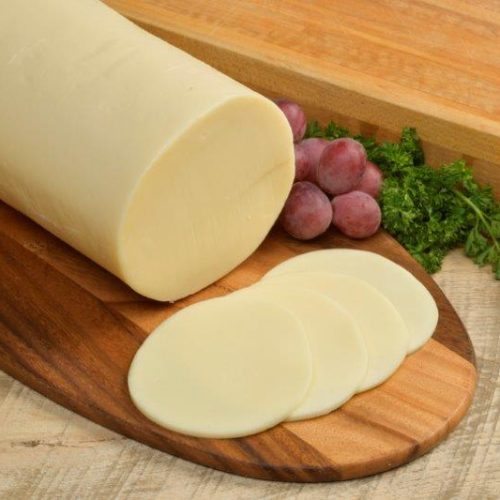
Provolone Cheese recipe
Embark on a journey to the savory world of Provolone Cheese, a classic Italian cheese that captivates with its robust flavor and smooth texture. Hailing from Southern Italy, Provolone is a semi-hard cheese with a distinctive taste that ranges from mild and creamy to sharp and tangy, depending on its aging. Whether enjoyed on its own, melted in sandwiches, or grated over pasta, Provolone adds a delicious touch of Italy to every culinary creation.
Ingredients
- Milk: High-quality preferably raw milk is essential for making good cheese. The quantity will depend on how much cheese you want to produce, but generally, you can expect to get about 1 pound of cheese from 10 pounds of milk.
- Starter Culture: This is a mix of bacteria that kickstarts the fermentation process by converting lactose in the milk into lactic acid. The specific type of starter culture used can influence the flavor and texture of the cheese.
- Rennet: Rennet is an enzyme that aids in coagulating the milk turning it from a liquid into a gel-like solid. You can use animal or vegetable rennet, or microbial alternatives.
- Salt: Salt is used in the brining stage to help preserve the cheese and enhance its flavor. It also plays a role in the formation of the cheese's rind.
- Water: Water is used in the brining stage. It should be non-chlorinated as chlorine can interfere with the cheese-making process.
- Cheese Mold: While not an ingredient per se you will need a cheese mold to shape your cheese.
Instructions
- Sanitize Your Equipment: Ensure that all your equipment is thoroughly cleaned and sanitized. This includes pots, cheesecloth, molds, thermometers, and other tools. This is to prevent the introduction of unwanted bacteria into the cheese-making process.
- Heat the Milk: Pour the milk into a large, stainless steel pot and heat it slowly until it reaches approximately 95 degrees Fahrenheit (35 degrees Celsius).
- Add Starter Culture: Once the milk reaches the desired temperature, add the starter culture and stir gently. The starter culture helps convert lactose into lactic acid, which is crucial for curd formation.
- Add Rennet: After allowing the milk and starter culture to rest for a minute, add the rennet. Rennet is an enzyme that further aids in curdling the milk.
- Cut the Curd: After the milk has set (usually in about 45 minutes to 1 hour), cut the curd into small pieces using a long knife or curd cutter. This helps expel whey from the curd.
- Cook the Curd: Slowly heat the curds to around 105-108 degrees Fahrenheit (40-42 degrees Celsius) while gently stirring. This further expels whey and firms up the curds.
- Drain the Whey: Remove as much whey as possible by pouring the curds into a cheesecloth-lined colander.
- Mold and Press: Place the curds in a cheese mold, apply pressure, and allow the cheese to rest. This helps shape your cheese and remove residual whey.
- Brine the Cheese: After pressing, immerse the cheese in a brine solution for several hours. This process helps preserve the cheese and enhance its flavor.
- Aging: Finally, age the Provolone cheese in a cool, humid environment for at least 2-3 months.
Video
Notes
Remember, the quality of these ingredients, particularly the milk, can significantly impact the final product. Therefore, it's important to source the best ingredients you can.